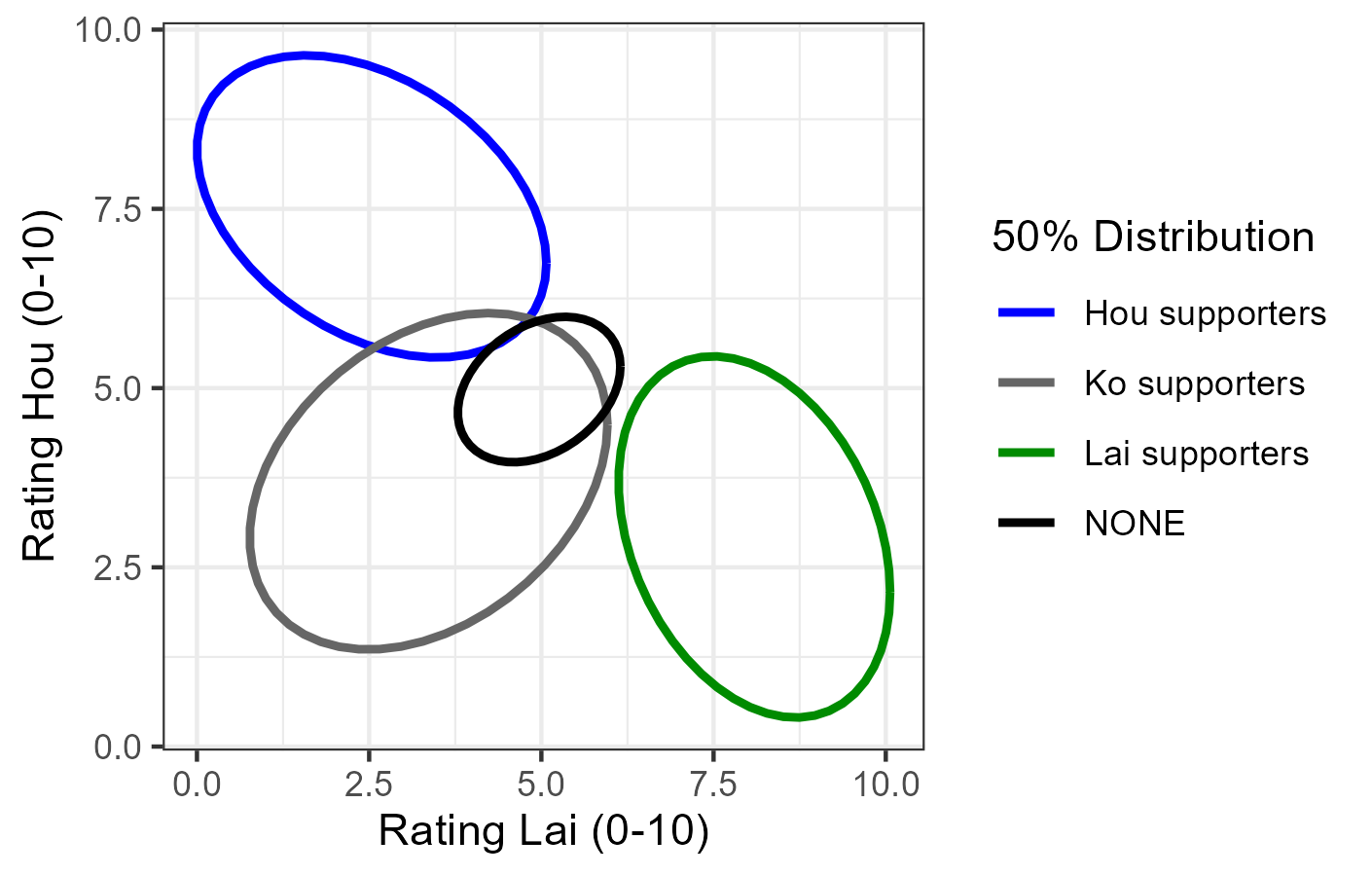Recently, the Taiwan People’s Party (TPP) has been caught up in a controversy over political donations, followed by the arrest of its founder, Ko Wen-je, in a corruption case stemming from his time as Taipei’s mayor. Beyond legal concerns, some party members and even a prospective legislator-at-large have started leaving the TPP. Polls show a drop in support for the TPP after the presidential election in January 2024.
Will Taiwan’s third party, which had risen over the past four years, disappear in the future?
Considering the voter base structure and the electoral system in Taiwan, I believe that third parties won’t vanish entirely, though they may undergo a qualitative change.
In recent years, the support base for Taiwan’s third parties has come from the growing number of independent voters, who have steadily increased since 2016 and now make up nearly half of the electorate. These independents have become disillusioned with the two major parties, the Kuomintang (KMT) and the Democratic Progressive Party (DPP), after experiencing eight straight years of governance by first the KMT then the DPP. Independent voters feel that Taiwan’s status quo on the unification-independence issue hasn’t changed despite these different parties’ time in power, and that neither has fully delivered on their political promises. As a result, many voters have lost faith in both major parties and become independents.
Among these voters, the unification-independence debate is no longer the top priority. Instead, they actively support maintaining the status quo across the Taiwan Strait and seek policies that go beyond the traditional Blue-Green divide. Some simply want to reduce the dominant power of the two major parties in setting the political agenda.
From 2020 to 2024, these independent voters responded to the populist appeals of Ko Wen-je and the TPP, rallying around the slogan that both the Blue and Green camps are equally bad. TPP supporters aren’t just indifferent toward the two main parties; they are emotionally repelled by them.
I analyzed data from the Taiwan Election and Democratization Study 2024 pre-election survey, which asked 3,000 Taiwanese voters to rate DPP presidential candidate Lai Ching-te, KMT candidate Hou Yu-ih, and TPP candidate Ko Wen-je on a scale of 0 to 10. I then categorized the respondents based on their intended vote. The distribution is shown in the chart below (with circles representing 50 percent of each group).
From the results, it’s clear that Lai’s supporters strongly favor Lai and oppose Hou (green circle in the bottom right), while Hou’s supporters favor Hou and oppose Lai (blue circle in the top left). These results are predictable.
However, Ko Wen-je’s supporters oppose both Lai and Hou (gray circle in the bottom left). Those who are indifferent to both candidates, rating them a 5, are likely to abstain from voting (black circle in the center). There is only a small overlap between Ko’s supporters and those of Lai or Hou.

The distribution of party votes in the 2024 presidential election that I analyzed reflects a similar pattern. The votes for Lai and Hou didn’t extend beyond their respective party lines; even though both candidates sought to present themselves as moderate and centrist, they ultimately failed to attract votes outside their own parties.
In contrast, among voters who opted for alternatives to the two main parties, many chose the TPP, while a significant number voted for Ko Wen-je only, giving him a million more votes than his party. These voters still refused to engage in strategic voting and continued to cast their ballots for Ko even though polls showed that he had no chance of winning.
From these results, we can see that nearly 4 million voters – over 30 percent of the electorate – were still motivated by their dissatisfaction with the Blue-Green divide as of the 2024 election. These people are not only willing to vote but also willing to donate during election periods and spend time engaging with political information. They are politically active, but their motivation comes from opposition to the two major parties.
Even if the TPP specifically crumbles amid its current struggles, this voter base will still exist in the coming years and could become the foundation for the current or next third-party campaign. These voters aren’t going anywhere, which means a new third-party movement could rise again at any time.
Given Taiwan’s electoral system, these voters could help the next third-party win seats through single non-transferable votes in local council elections or via party votes in legislative elections, ensuring a continued presence in the political arena. Therefore, I believe that third parties won’t disappear easily in the short term.
However, how will the next third party rise? Over the past four years, the TPP built its support through populist rhetoric, but it didn’t establish a strong governance foundation or prove its ability to implement policies and deliver on promises. As noted above, in the 2024 presidential election, Ko received far more votes than his party, indicating that the TPP’s appeal still doesn’t match Ko’s personal charisma. However, relying too much on personal appeal means that support fluctuates with the individual’s fate.
Currently, the third-party vote distribution is still mainly concentrated in urban areas with high levels of education, higher incomes, more young people, and a higher proportion of renters. To spread beyond this base, the first step is to become competitive enough in the single-member district (SMD) elections – since the mayoral, legislative, and presidential races are all SMD.
While SMD voting encourages a two-party system, the example of the United Kingdom shows that it’s possible to have more than two major parties at the national level. When different parties establish their own strongholds in some districts, they can win elections in those areas, leading to a political landscape with more than two dominant parties. If a new third party can gradually win locally (starting with cities) and expand outward through commuter populations, it could eventually reach the national level.
The second step would be for a third party to form a clear and distinct political platform that differentiates itself from the two major parties, then implement this platform in their strongholds to prove its effectiveness. In Europe, some Green parties have moved toward national governance by first securing local strongholds and successfully implementing their policies there.
These voters who oppose the Blue-Green divide may be impacted by the negative image of the TPP, as I previously predicted. They will become more selective, no longer satisfied with just personal charisma, but also look for the ability to formulate and execute long-term policies. Beyond trust and charisma, the next step for the next third party is to develop clear, actionable policies that can be implemented at the grassroots level and scaled up to the national level – this is what I mean by “qualitative change.” Of course, if a third-party cannot establish any strongholds to implement its policies, then these voters who are fed up with the Blue-Green divide may temporarily lower their political engagement, waiting for the next niche party to mobilize them again.
Therefore, I believe that when a new third-party emerges in the political arena, it won’t just rely on personal charisma but will present a fresh policy direction to gain the support of these anti-Blue, anti-Green voters. This new third party will be more competitive.
For the Blue and Green camps, the challenge is to change these voters’ opposition to them and gradually win them back, one policy at a time. However, given the current gridlock in the Legislature Yuan, pushing through domestic policy reforms won’t be easy.
































